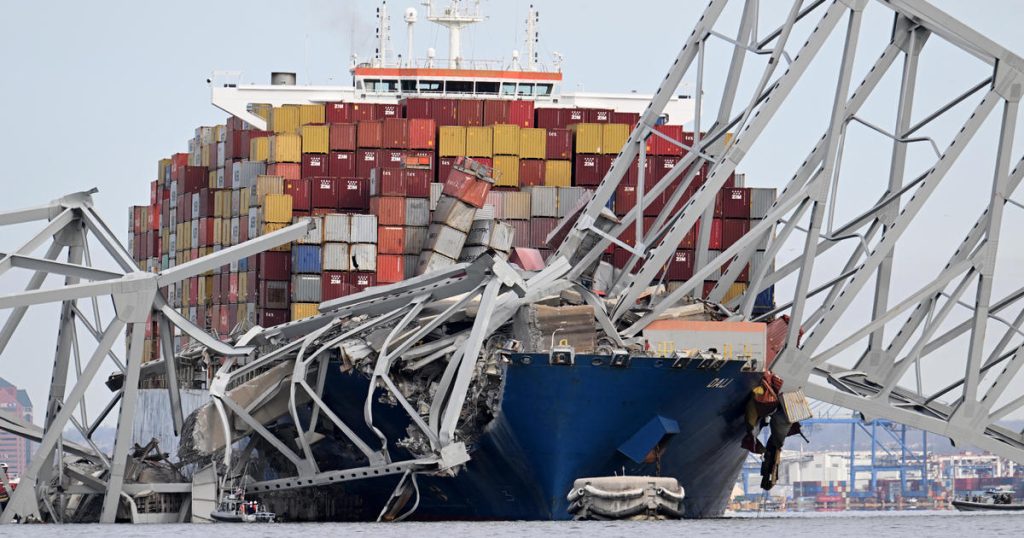The Francis Scott Key Bridge in Baltimore collapsed after being hit by a large container ship, causing vehicles and people to fall into the river below. An active search and rescue mission is ongoing, and the National Transportation Safety Board is investigating the incident. The bridge had a fair rating during its latest federal inspection, with concerns about one of its columns. The condition of the bridge was not the sole factor in the collapse, as the massive size of the container ship likely played a significant role.
Experts have analyzed the video of the collapse and believe that the ship’s impact on the bridge caused one of its supports to fail, leading to the collapse. Most bridges in the U.S. fall into a fair range, which is not ideal for society. While lessons can be learned from the collapse, changes to bridge design may not be the solution. Instead, factors such as the management of shipping traffic and the increasing size of container ships should be considered to prevent similar accidents in the future.
Lessons from past bridge collapses, such as the Quebec Bridge collapse in the late 1800s, have shaped modern engineering practices. The Key Bridge, built in the 1970s, was considered to be modern and sufficient in design. The ship hitting the bridge likely resulted in an electrical power failure, as indicated by flashing lights on the ship. Authorities confirmed that the ship lost power before the crash, and the crew members were all accounted for with no reported injuries.
The Key Bridge was a major transportation route used by thousands of people daily, and its collapse has limited access across the Patapsco River. A construction crew was working on the bridge at the time of the accident, with two workers rescued from the water and six others still unaccounted for. The incident highlights the importance of understanding the risks associated with shipping traffic and the size of container ships in preventing similar accidents in the future. The investigation into the collapse will provide valuable information to improve safety measures for bridges and maritime traffic.


